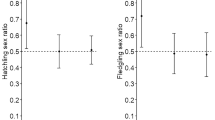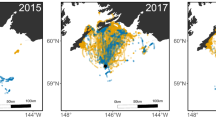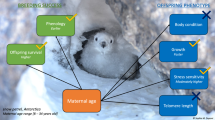Abstract
We examined how variations in parental quality affect the reproductive success of a long-lived seabird, the snow petrel (Pagodroma nivea). In particular, we focused on how prebreeding body condition (prebreeding body mass adjusted for structural size) influences the hatching success of male and female snow petrel. Condition in females, but not in males, had a significant effect on hatching success. Among breeding pairs, early body condition of pairs was not significantly related to their hatching success. Laying date had a significant effect on hatching success, but this was due to heavy snowfalls during the beginning of the laying period. We suggest that females in poor early condition would not be able to build up sufficient body reserves necessary for successful incubation during the energy-demanding egg formation period. Moreover males, being structurally larger, would have a higher fasting capacity. These results show that the hatching success of the snow petrel is clearly influenced by female condition and suggest that effects of variations in environmental conditions may depend on body condition of individuals. However, the year of the study appeared to be an unusually poor year for reproduction, which may be why female body condition appears to be important.
Similar content being viewed by others
Author information
Authors and Affiliations
Additional information
Accepted: 24 June 1998
Rights and permissions
About this article
Cite this article
Barbraud, C., Chastel, O. Early body condition and hatching success in the snow petrel Pagodroma nivea. Polar Biol 21, 1–4 (1999). https://doi.org/10.1007/s003000050326
Issue Date:
DOI: https://doi.org/10.1007/s003000050326




